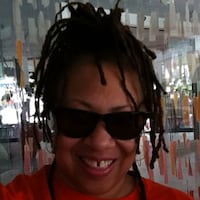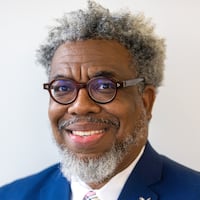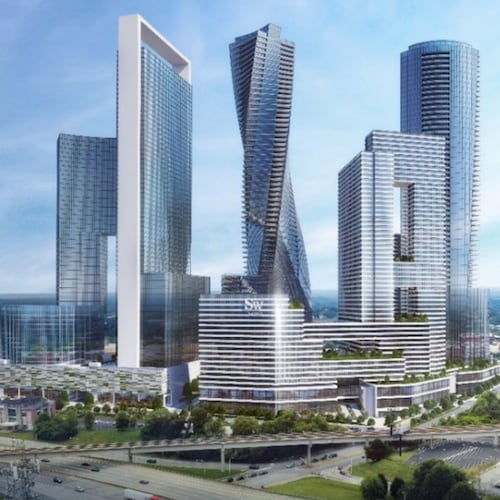This story was originally published on Dec. 5, 2013.
In June 1990, Atlanta officials prepped for a visit from someone who had suddenly become one of the world's most beloved figures — Nelson Mandela.
Mandela, who had spent 27 years as a political martyr in South African prisons on charges of sabotage, had been released a few months earlier after intense public and political pressure from much of the world. He had become a universal symbol of peace and tolerance.
In Atlanta, dozens of banners were being printed to greet him. Hundreds of police officers were mobilized. He was chauffeured in an armored limousine provided by the U.S. State Department. It was a welcome befitting a head of state and a major coup for the city, the headquarters of the civil rights movement and birthplace of the Rev. Martin Luther King Jr.
» RELATED: Atlanta opens heart to Mandela: 50,000 cheer ANC leader at stadium
Early on the morning of June 27, dozens of people — among them, Mayor Maynard Jackson, Gov. Joe Frank Harris, Coretta Scott King and the Rev. Joseph E. Lowery, who was then president of the Southern Christian Leadership Conference and chairman of the host committee — gathered at Hartsfield International Airport to greet Mandela’s chartered jet.
Mandela and his then-wife Winnie Mandela walked off the plane and down a red carpet.
Then the man who had been silenced for 27 years spoke.
» RELATED: Who did Nelson Mandela meet during his 1990 visit to Atlanta?
“This is our first stop in the southern United States,” Mandela said. “The weather, the landscape, the warmth of the people evokes a memory for us of home. Unlike you, we are still under the grip of white supremacy. It is a great honor and pleasure to be where Martin Luther King Jr. was born and brought up. We look forward to paying our respects … and to meeting with some of the most illustrious daughters and sons of this city.”
“We welcome you home,” Mayor Jackson said.
Good over evil
Mandela, who died Thursday after a long battle with a recurring lung infection, had been in and out of the hospital since June 8. His lengthy illness had South Africans and the world on edge awaiting updates.
But 23 years ago, Mandela, who was released from prison on Feb. 11, 1990, was eager to spread his message of ending apartheid as part of an eight-city tour through America, where he had become a cult symbol, and was well on his way to cementing his place as an international leader.
Mandela’s trip to Atlanta was on the tail end of the American leg of a grueling six-week tour of Europe, North America and Africa. He arrived in Atlanta after spending the previous day meeting with President George H.W. Bush in the White House.
In New York City, he had been feted with a ticker-tape parade up Broadway and a concert at Yankee Stadium. In Detroit, he would meet Rosa Parks. In Los Angeles, he would be serenaded by Diana Ross. Cuban-American hecklers awaited him in Miami, upset with his defense of Fidel Castro.
In Atlanta, where he wanted to show the connection between the South African struggle against apartheid and the American struggle for civil rights, he was adored.
When Mandela came to the King Center, he briefly met with the King family in the study before placing a wreath at Martin Luther King Jr.’s crypt.
“When he came through everyone’s jaw dropped,” said Steve Klein, a spokesman for the King Center then and now. “The center has been visited by heads of state, prime ministers, presidents, kings and queens. But those visits didn’t measure up to Mandela’s. He was bigger than royalty. Mandela is somebody who actually earned the tremendous respect of people all over the world. He didn’t inherit it.”
Six years before Atlanta would host the Olympics, Mandela’s visit was, according to Carl Ware, now a retired senior Coca-Cola Co. executive, a “high moment” and a tremendous boost for the city’s growing international reputation.
“He was majestic,” said Ware. “He had a humble spirit. And I had the sense he was very conscious of his own power and aware of his impact on South Africa and the world. He was very confident of the power of good over evil.”
Ware said Mandela had a tight schedule, so the trip was “like a flash,” and not as extensive as his 1993 fundraising visit on the eve of his historic presidential run.
What kind eyes he had
His visit saw a perfect 79 degrees in Atlanta. In an afternoon affair, 11,569 people saw the Braves’ John Smoltz toss a three-hit shutout over the Dodgers at old Fulton County Stadium — which is where organizers originally wanted to hold the big public rally for Mandela but couldn’t because of the scheduling conflict.
Instead, more than 50,000 people would cram into Georgia Tech’s Bobby Dodd Stadium that night to hear Mandela.
Earlier at the airport, Susan Ross, who at the time was the city’s “unofficial photographer,” as well as a fixture in documenting Atlanta’s civil rights community, was also among those who waited anxiously for Mandela’s plane to land.
Like others, Ross was fascinated by his dignified manner. “When he would smile, it would just light up the room. It was electric.”
He displayed the same manner whether he was greeting children or dignitaries.
Yenu Wodajo was only 10 years old when Mandela arrived. She had been participating in Camp Best Friends when her group was tapped to dance and sing the African National Congress’ official anthem for Mandela at the airport.
“We rehearsed the national anthem over and over,” said Wodajo, now a law student and former television anchor. “Even now, when I see Mandela, I can see us singing it. I still remember the words to it. That is a testament to how many times we rehearsed.”
As young Wodajo began “Nkosi Sikelel’ iAfrika,” Mandela raised his fist. So did Jackson and others in the assembly, including Coretta Scott King.
“That was the first time I ever saw Mrs. King lift her fist,” Ross said.
When the anthem was over, Mandela walked over to thank Wodajo and the campers.
“I can remember looking at his face and thinking, ‘What kind eyes he had,’” Wodajo said. “The kindness in his eyes was beautiful.”
In King’s court
But as popular as Mandela had suddenly become, up until his release he was still “virtually unknown in America,” TransAfrica founder Randall Robinson once wrote.
The faces of apartheid belonged to men like Steven Biko, the activist who was murdered while in police custody in 1977, and Anglican Archbishop Desmond Tutu, who won the 1984 Nobel Peace Prize.
Photographs of Mandela during his years in captivity were so rare that the man who was released from prison barely resembled the man who walked in. But Coretta King knew and had been writing op-ed pieces about Mandela since the early 1980s “before most Americans even knew who he was,” said the King Center’s Klein.
In 1985, Coretta King and two of her children, Bernice and Martin III, were arrested in Washington for protesting outside of the South African embassy. Many in the anti-apartheid movement contend that her arrest sparked America’s interest in Mandela.
Public Enemy rapped in 1988, “Mandela/cell dweller/Thatcher/You can tell her/ clear the way for the prophets of rage.” A year later, in Spike Lee’s “Do the Right Thing,” Buggin’ Out included him in a list of black heroes whose images should be on the “Wall of Fame” at Sal’s Pizzeria.
Bernice King, the current CEO of the King Center, would later say about Mandela: “Outside of Jesus Christ and my parents, he is the one.”
When she met him, she found a very “calm spirit, very dignified … a forgiving spirit. It was so comforting to me.”
Bickering disrupts AUC visit
Mandela then met with civil rights leaders at Big Bethel AME Church, where Lowery presented him with the SCLC’s Human Rights Award, and spoke at Morehouse’s King Chapel, where 37 colleges, including those in the Atlanta University Center, presented him with honorary degrees.
But, according to Lawrence E. Carter, the dean of the Martin Luther King Jr. Chapel at Morehouse College, only a few people actually witnessed it, as the college presidents fought for control of the event, Carter said.
Because it was being held in King Chapel, some didn’t want it to seem like a Morehouse event and prevented the college from unveiling an oil painting of Mandela on stage.
Another president convinced them to bar students from the event — instead saving the 2,500 seats in the chapel for an “elite” crowd of Atlanta dignitaries.
But two hours before the event, the chapel was empty and no one was lining up to attend. Carter was ordered to call each campus and demand that students be sent.
“I had them send out an SOS and knock on doors to get the students rushing over,” Carter said. “When Mandela walked on the stage, the downstairs was full but the balcony was empty. Mandela kept looking into the balcony and the presidents were embarrassed because they had behaved in an elitist fashion and most of the students had made other plans.”
Amazing energy, no animosity
Many of those students were probably part of the 50,400 people — who had endured police barricades, shoving matches and long schedule delays — at Bobby Dodd Stadium waiting for Mandela, who was about an hour late.
Hosea Williams was arrested outside for protesting the price of the $5 tickets. Four white supremacists made plans to burn an ANC flag but quietly left when they were threatened with arrest.
Olatunji Lumumba, 60, waited in line to see Mandela. “I just had to be there. I would not have missed that for any reason. It was kind of like a family reunion. It seemed like everybody was connected to him and through him to Africa. It was a joyous kind of occasion. It was beautiful.”
Faye Burruss, who had been Coretta King’s hairstylist for years, never missed a chance to expose her family to greatness, so she gathered them, including her 8-year-old granddaughter Brandee Wilder, and took them to Bobby Dodd.
“As a child, you are sensitive to energy, and the energy was amazing,” Wilder said. “We were chanting and singing, and when Mandela got up to speak, the people went crazy. Then, as he began to speak, it was so quiet. My grandmother — she died in 2005 — just told us to listen, because this man was a survivor.”
During that speech, Mandela made frequent references to King, even drawing on “I Have a Dream.”
“Let freedom ring in South Africa,” Mandela said. “Let freedom ring wherever the people’s rights are trampled upon.”
After the rally, Faye Burruss piled her family into her Cadillac and waited for her granddaughter to pepper her with questions as usual.
“What did he do to go to jail?”
“If it was wrong to imprison him, why was he not mad?”
“He had no animosity or bitterness,” Wilder said. “I never sensed any anger in his voice and that was profound to me even then. He was moving toward peace, equality and justice for his people.”
Keep Reading
The Latest
Featured


